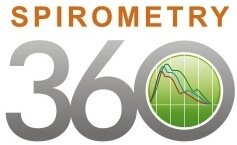Ready to purchase a spirometer? Here are some tips to keep in mind:
- Ideally, try a spirometer before you purchase. It is best to try several to get a sense of the features. Many manufactures will have reps available to do onsite demonstrations.
- Pick a spirometer with a simple and functional user-interface.
- Consider what form factor that you would like your spirometer to be. Office spirometers are be divided into two categories:
- Hand-held devices that are highly portable and can print directly to a printer. Tests can often be uploaded to PC software.
- PC-connected devices that must be directly connected to a computer in order to work.
- Make sure you understand your printing and storing options. Spirometry 360 highly recommends (and ATS requires) that you be able to print at least the three best efforts, both data and the FV and VT curves. Not all devices will do this. A device should report to you at least the following: FEV1, FVC (or FEV6), FEV1/ FVC, FET (forced expiratory time), and number of efforts performed. A device that will calculate the “variance” for FEV1 and FVC will save you a lot of time.
- If you are planning to interface with an EMR, consider compatibility issues.
- If you have a need for a special reference set, check to see that the spirometer includes it.
- Make sure the device displays the best three curves large enough on the screen and printouts. This is vital for establishing test quality ensuring efficient clinical decision making.
- For pediatric patients, consider whether you want pediatric incentive software (blowing out candles, etc.). Likewise, if the device can display input in real-time on a screen, this can be an excellent incentive for all ages and a visual guide for the coach. These types of features often require the use of a computer.
- Consider the shape of the spirette (mouthpiece). Some are designed as large cylinders that can lead to difficult testing with children and can lead to air leaks. Also, consider the price of the disposable spirettes.
- Spirometers can be breath-actuated or actuated by the coach. Many office personnel report that spirometers that require actuation by the coach are difficult to use. Look for a breath-actuated device.
- Some spirometers no longer require daily calibration and can hold the factory calibration for multiple years. This avoids the need to perform a daily calibration check on the device. This can be an important time-saver.
